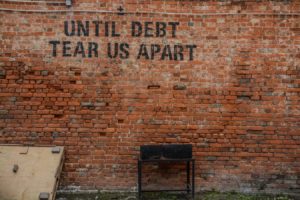“What is the best way to fix my credit score?” This is one of the most frequently asked questions asked by many. The steps to fix your credit score do not involve rocket science. They are simple enough – a lot of people just get scared of worsening their credit score if they do it themselves.
The truth, however, is that it’s sometimes even better to do it yourself than to have credit repair service do the job for you. Though they can help in solving the problem for you, you may have a hard time paying their fees, depending on who you use.
From my own personal journey to fix my credit score, I found that a combination of the two techniques worked the best. I’m going to provide you with some strategies you can use by yourself to get the ball rolling though!
With this in mind, you should know what separates a bad credit score from a good one. The numbers usually indicate this. A score between 580 and 650 is considered by creditors as fair. If your score is around 500, then your score is below average.
To fix a credit score of 500, however, is easier than a rating of 400 or below. If your rating has gone as low as that, then you should immediately take steps to fix your credit score. Some people who fall into this boat (400’s) normally don’t have any established credit yet, and that is an easy fix. Just get new credit!
However, some cases are the result of poor decisions but don’t worry this can be reversed. If you got yourself into it, you can certainly get yourself out 🙂
Best Way To Fix My Credit Score
- Get your credit report:
Before anything else, make sure that you have a copy of your credit report from your three credit bureaus. They are Experian, Equfax, and Transunion. Experian is the longest of the three reports and will contain more detail than the other two. No matter which bureau you choose, the report must contain a consolidation of all your outstanding loans, as well as the payments you have made.
You can request this one from a credit company if you would like assistance with repairing your credit as well. Just make sure they have a good reputation in the marketplace for credit restoration.
Some companies will try to charge you just for your credit report, but there are ways to get them at no cost at all. I have also provided a guide below that walks you through the steps to get your credit report for free 🙂
- Identify your financial shortcomings:
After running through your credit score, identify what your weak points are. You should know the causes of your low credit before you can even hope to improve it. A long list of credit applications, many unpaid loans, and failure to pay monthly credit balances are only some of the factors that can pull down your rating.
Don’t be embarrassed or afraid to do this. It’s not the most fun part of the process but once you take a sobering look at how bad your situation is, it will instill in you a new value of responsibility for your financial future you may not have had prior.
Determining the causes of your low rating will help you decide your next steps. If the cause is your failure to pay the minimum monthly payment, it’s not too late to pay your monthly dues. Perhaps you can pay more than your minimum payment every month, so you can offset the monthly dues you failed to pay in the recent months. This article uncovers some strategies to pay off your debt and build more credit.
- Settle unpaid loans:
This is very important, and there are several ways to do this depending on how bad your situation is and how much you actually owe. As for unpaid loans, you can apply for a debt consolidation loan and use the money to pay all outstanding debts.
Though a consolidation loan just combines all your unpaid credit, it usually has a lower interest rate. You will just have to channel all your payments to a single loan, and don’t have to worry about the overwhelming number of outstanding loans you have.
The alternative:
Pay those bad boys off yourself! I speak from experience here and am telling you that it can be done. When I began the journey of paying off my bad debt, I had over 24 accounts in collections that needed to be paid off. I decided to take my time and eliminate them one by one. There are some strategies to this, however.
First, you want to pay off the smaller debt first. Let’s face it, most people aren’t millionaires, and don’t have thousands of dollars to make massive lump sum payments on old debts. So start with the small ones, and then work your way up to the larger ones. Even if you have to set up payment arrangements to do this, its more than worth it.
- Get new credit:
The number of credit applications you hold can also be remedied to improve credit score. The solution is fairly easy: you just have to retract your applications and do away with credit cards that you don’t need anymore. Yes, even your latent credit cards have a negative impact on your credit rating if the payment history is bad.
So while you get these paid down, make sure to build newer lines of credit for yourself. It could be a secured credit card, that gives you more control and is less risky, or a department store credit card that you use for purchases.
The important thing here is to make sure you don’t go over 30% of your credit limit. So for example, if your credit limit is $300, your actual spending should stop at $90. This looks good to the credit bureaus and marks you to them as a responsible spender.
To fix your credit score, you will have to show creditors that you are a good payer. This is the exact message you will be telling them if you do any of the steps that were explained.
So if you asking, “what is the best way to fix my credit score?”, below is a free guide that will walk you through the process step by step and will also cover:
- Getting and Understanding your credit reports & scores
- Real “how-to” for improving your credit (these are the very tactics the best credit repair firms in the country use)
- Powerful action plans
To Better Credit!


